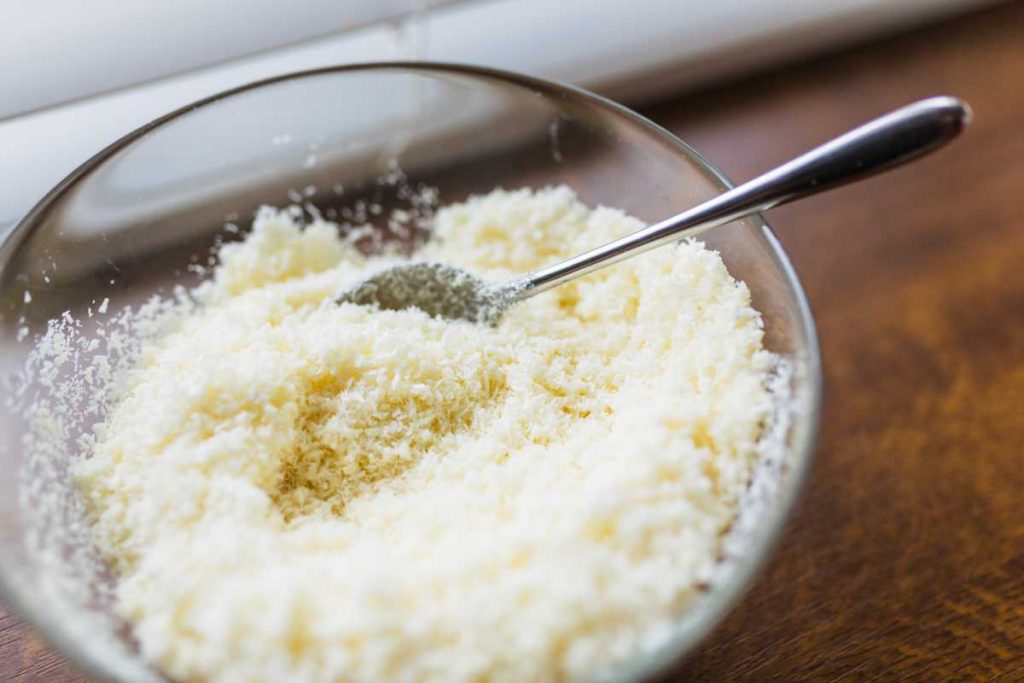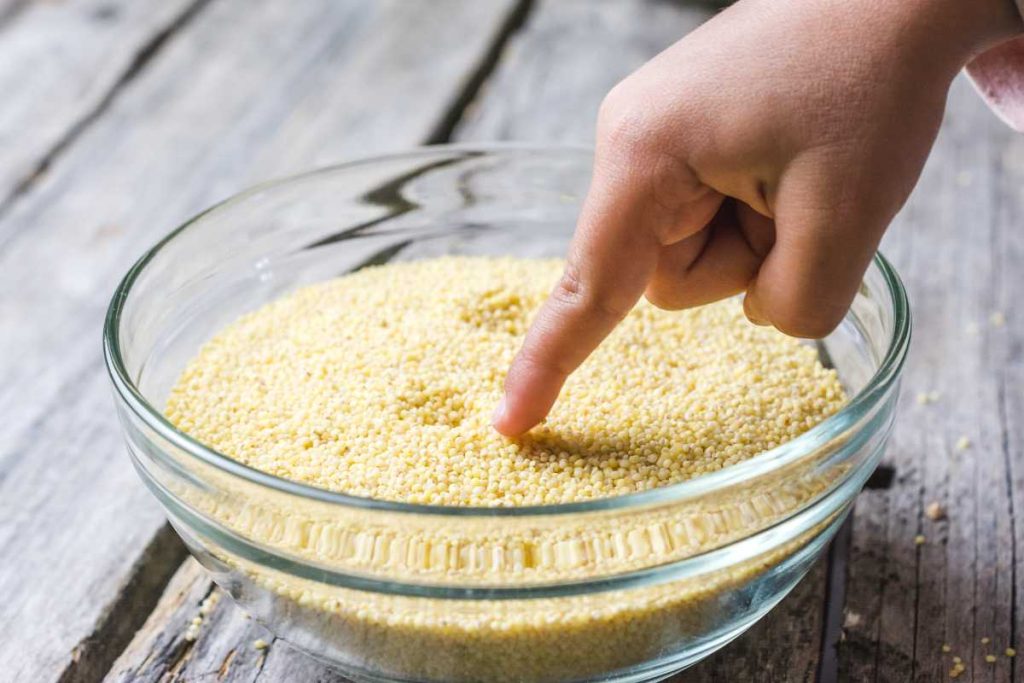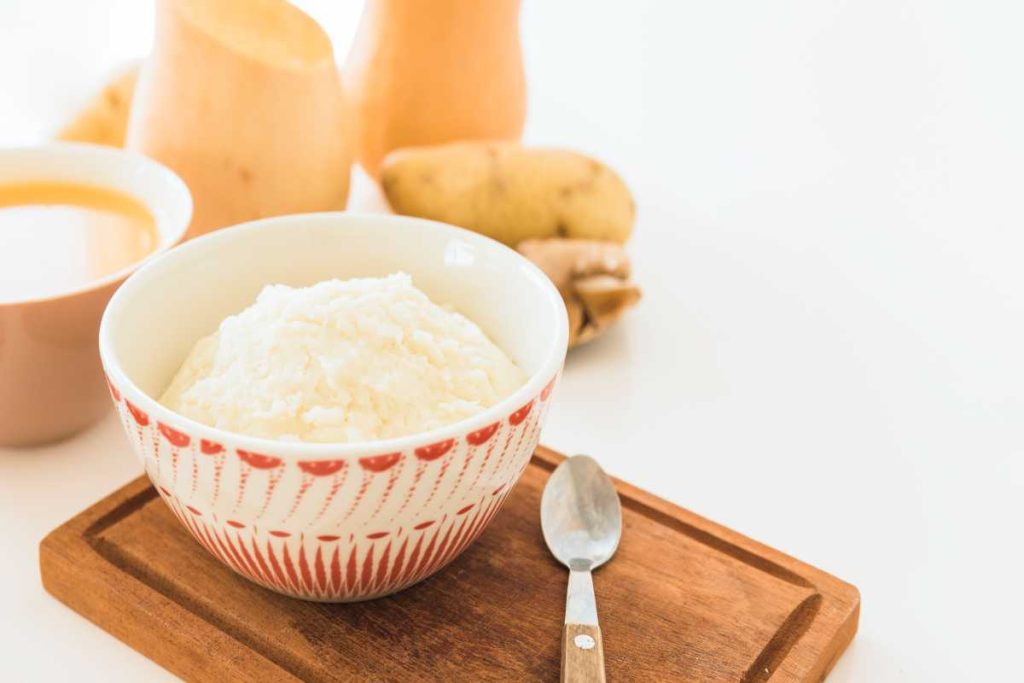Semolina, a fine flour derived from durum wheat, is a versatile ingredient found in a wide range of dishes across various cultures. Known for its unique texture and slightly nutty flavor, semolina is not just a staple in kitchens but also a nutritious food option with several health benefits. This blog post explores ten significant health benefits of semolina, encouraging you to consider adding it to your diet for enhanced well-being.

1. Rich in Nutrients
Semolina is a powerhouse of essential nutrients, making it an excellent addition to a balanced diet. It contains:
- Protein: With approximately 12-15% protein content, semolina is an excellent source of plant-based protein. This is particularly beneficial for vegetarians and vegans seeking to meet their protein needs.
- B Vitamins: Semolina is rich in B vitamins, including thiamine (B1), niacin (B3), and riboflavin (B2). These vitamins play crucial roles in energy metabolism, helping the body convert food into usable energy.
- Minerals: It also contains significant amounts of iron, magnesium, and phosphorus, all vital for maintaining various bodily functions, including bone health and oxygen transport.
Tip:
Incorporate semolina into your meals for a nutrient boost, whether in pasta, baked goods, or breakfast dishes.
2. Promotes Digestive Health
Semolina is an excellent source of dietary fiber, particularly in its whole grain form. Fiber plays a critical role in digestive health by:
- Preventing Constipation: The fiber content in semolina adds bulk to the stool, promoting regular bowel movements and preventing constipation.
- Supporting Gut Health: A fiber-rich diet can help maintain a healthy gut microbiome, which is essential for overall health.
Tip:
Combine semolina with fruits and vegetables to enhance your fiber intake. For example, try adding cooked semolina to vegetable stews for added texture and nutrition.
3. Supports Weight Management
Including semolina in your diet can help with weight management in several ways:
- Increased Satiety: The combination of fiber and protein in semolina promotes a feeling of fullness, helping to control hunger and reduce overall calorie intake.
- Low Glycemic Index: Semolina has a lower glycemic index compared to many processed grains, leading to slower digestion and more stable blood sugar levels.
Tip:
Opt for semolina porridge or salads as a filling meal that keeps you satisfied longer, which can help prevent unhealthy snacking.
4. Boosts Energy Levels
Semolina is primarily composed of complex carbohydrates, which provide a steady and sustained source of energy. This makes it an ideal food for:
- Athletes and Active Individuals: Consuming semolina before physical activity can provide the necessary energy to sustain performance.
- Everyday Energy Needs: Including semolina in your meals can help maintain energy levels throughout the day, reducing fatigue.
Tip:
Prepare a semolina-based dish like pasta or couscous as a pre-workout meal to fuel your activity.
5. Supports Heart Health
The heart-healthy benefits of semolina are attributed to its fiber content and nutrient profile:
- Cholesterol Management: Soluble fiber can help reduce LDL (bad) cholesterol levels in the blood, lowering the risk of heart disease.
- Blood Pressure Regulation: The potassium in semolina helps maintain healthy blood pressure levels by balancing sodium intake.
Tip:
Incorporate semolina into your diet alongside heart-healthy foods like fruits, vegetables, and lean proteins for optimal cardiovascular health.
6. Gluten-Free Alternative for Some
Although semolina is derived from wheat and is not gluten-free, it can be suitable for individuals with a mild gluten sensitivity. However, those with celiac disease should avoid it. For those seeking gluten-free alternatives, consider:
- Gluten-Free Semolina: There are gluten-free semolina alternatives made from rice or corn available, which can provide similar texture and culinary versatility.
Tip:
Experiment with gluten-free semolina in recipes such as gluten-free pasta or baked goods for a healthier option.
7. Regulates Blood Sugar Levels
Semolina’s low glycemic index means it has a minimal impact on blood sugar levels, making it a smart choice for individuals with diabetes:
- Stable Blood Sugar: The gradual release of glucose into the bloodstream helps prevent spikes and crashes in blood sugar levels.
- Reduced Risk of Diabetes: Incorporating low-glycemic foods like semolina into your diet may help lower the risk of developing type 2 diabetes.
Tip:
Pair semolina with protein and healthy fats (e.g., nuts, olive oil) to further stabilize blood sugar levels.
8. Supports Healthy Skin
The vitamins and minerals found in semolina contribute to skin health:
- B Vitamins: These vitamins are essential for maintaining healthy skin and promoting cell regeneration.
- Antioxidants: The presence of antioxidants in semolina can help combat oxidative stress, reducing signs of aging like wrinkles and fine lines.
Tip:
Incorporate semolina into your diet as part of a balanced approach to skincare. Eating a nutrient-rich diet promotes skin health from the inside out.
9. Enhances Bone Health
Semolina contains essential minerals like phosphorus and magnesium, both crucial for maintaining strong bones:
- Bone Density: These minerals contribute to bone density and may help reduce the risk of osteoporosis, especially in older adults.
- Calcium Absorption: Phosphorus plays a role in the body’s ability to absorb calcium, which is vital for bone health.
Tip:
Combine semolina with dairy products (if not lactose intolerant) or fortified plant-based alternatives to maximize calcium intake for bone strength.

10. Versatile Culinary Uses
Semolina’s versatility makes it a fantastic ingredient for various dishes, including:
- Pasta: A staple in Italian cuisine, semolina is the primary ingredient in traditional pasta, offering a firm texture and rich flavor.
- Couscous: Semolina is used to make couscous, a popular dish in North African cuisine, which can be served with various toppings and sauces.
- Porridge and Puddings: Semolina can be cooked to make delicious porridge or creamy puddings, making it suitable for breakfast or dessert.
Tip:
Explore different cuisines by trying semolina in various recipes, such as semolina cakes, semolina upma, or savory semolina pancakes.
Conclusion
Incorporating semolina into your diet can provide a wide range of health benefits, from supporting digestive health to promoting heart health and enhancing skin vitality. Its rich nutrient profile and versatility make it a valuable addition to meals. As with any food, moderation is key. Embrace semolina as part of a balanced diet to fully enjoy its health benefits.


